
views
Surviving a Riot

Prepare an escape route. If you know you're in a riot-prone area but have no way to avoid being there, then taking a few simple precautions can have a big impact on your life. Though it's easier to assume that a riot won't happen in your area, it's better to be prepared for the worst. Even the calmest crowd can turn dangerous when its members are in a frantic, angry mood. Anger and hysteria are contagious, so it's best to know how to avoid these situations if they arise. Get familiar with your area. If you're just visiting a location for a season or two, you should still get to know your surroundings as intimately as possible. Study a map until you're very comfortable with the area where you work, the area where you live, and the routes between those. Think about your possible escape routes and safe havens before anything actually happens. Crossroads are good because you've got at least one road to race off down if rioters go crazy or the police start charging. If you work in a volatile environment, make sure you know several routes for getting home so that you have a number of methods of escape in the event of a riot. Carry small amounts of cash with you in case you need to quickly arrange transportation, pay off looters, or address your basic needs.
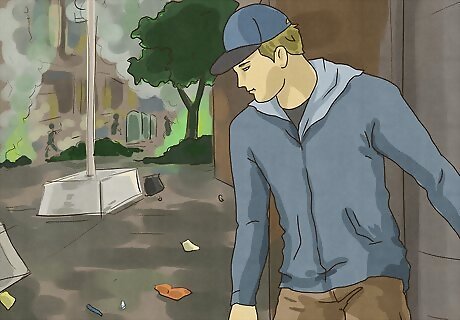
Remain calm. Riots bring intense emotions boiling to the surface, but you'll be better off if you can keep your own emotions in check. Your adrenaline and survival instincts will kick in, but strive to think rationally and pursue safety methodically. Avoid confrontation by keeping your head down. Walk at all times. If you run or move too quickly, you might attract unwanted attention. Adrenaline triggers the "fight or flight" response, so your first instincts may be to react or to run away. If you remain your composure, you're less likely to produce too much adrenaline and more likely to get through a very stressful situation.
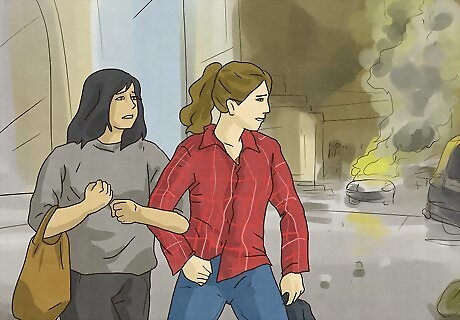
Keep your loved ones close. If you're not alone, then the first thing you should do is grip the hands or lock elbows with all of the people who are with you. If you're with a child, hold them in your arms so they don't get trampled. Sticking together with your loved ones should be your first priority, and your second should be finding a way out. Reassure the people you're with that you have strength in numbers and that you'll be fine if you stick together.
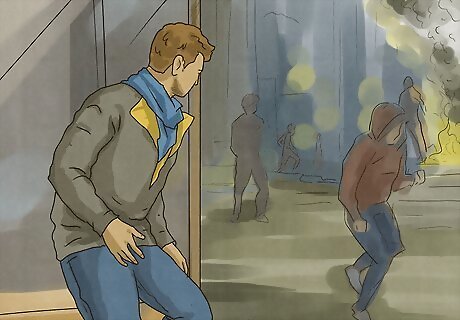
Don't get involved. If you're caught in a riot, the last thing you want to do is try to take sides, help out, or stand out. In fact, you should stand out as little as possible as you move to the outside of the mob and away from the action. To do this, stay close to the walls and other barriers and avoid bottlenecks or any areas where a lot of people are squeezing through a small space.
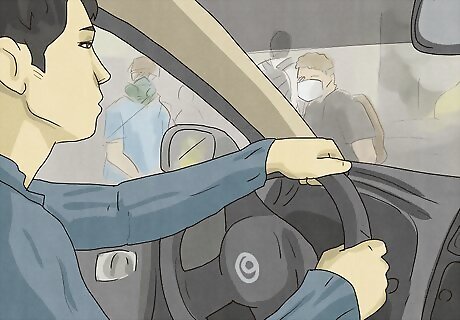
Drive carefully if you're in a car. Unless your car is the focus of the angry mob in the riot, you should stay in the car and continue driving as calmly as possible. Try to keep to the streets that are clear of riots, and avoid the main roads that are more likely to be occupied. Keep moving forward and don't stop to assess the situation. If someone tries to block your car, honk your car and keep driving until they get out of the way (of course, this doesn't mean you should hit the person). Drive at moderate speed so they have time to back off and realize that you mean business. Remember that you're in a position of power when you're driving. Don't let a few angry people stop you from driving your car and keep going unless you absolutely can't. Many activists are afraid of cars because there have been cases of drivers running down the protesters on the roads. Remember to be firm, but not aggressive, to avoid giving the wrong impression.
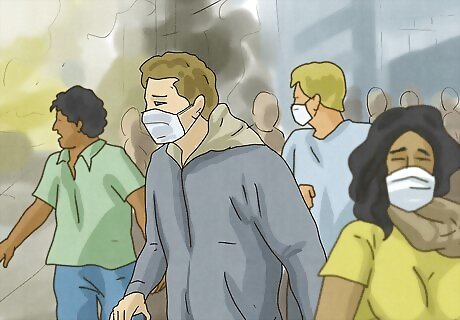
Move away from the riot as calmly as possible. If you're on foot, you should move away by going with the flow of foot traffic, not against it. If you go against the traffic, you're much more likely to stand out, to get stampeded, or just to get pushed or blocked. If you feel that you may fall down in the big crowd and get trampled, use your elbows to push down on the crowd so that it carries you. Though you may want to run for your life, you should move calmly and relatively slowly. Continue to move with the crowd until you can escape into a doorway, an alley, a side street, or a safe building. If you're in the middle of a crowd, it's especially important to try to move in the direction of the crowd until you make your way to the outside of the crowd.
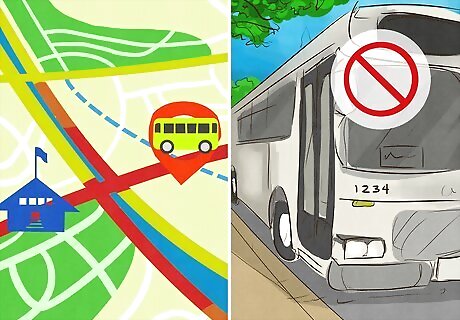
Avoid heavy-traffic areas. To maximize your chances of safety, you should avoid the areas that are most likely to be crowded and should stay off the beaten path so you don't put yourself in a dangerous situation. Even if the heavy-traffic areas are your quickest path home, they won't be the safest path if they are the targets of any rioters. Here's what you should do: Avoid major roads. Major roads, squares, and other high traffic areas are likely to be crowded with rioters. If possible, stick to less-traveled side streets to avoid the mobs. Avoid public transportation. Buses, subways, and trains will likely be out of service, and stations and depots will probably be packed with people.
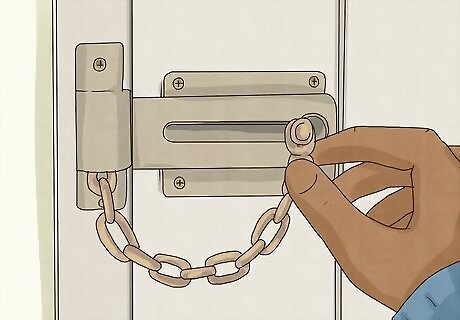
Move to a safe, enclosed area. Riots most commonly happen outside on the streets, not inside buildings. Just by moving inside a sturdy and controlled building, you can protect yourself from the brunt of a riot. Any building with a basement, or even a sub-basement, can help you hide from a mob. Being in any building at all is safer than being out on the streets. Look for homes that can serve as "safe houses" in advance if you're really concerned about finding a safe space in the event of a riot. If you can, talk to the owners first. Lock the doors and windows and stay away from them. Though you may be tempted to watch the riot from the windows, this will increase your chances of getting hurt. Move to rooms that do not lead directly outside to avoid getting hit by stones, bullets, or other projectiles. Look for at least 2 exits in the building in case you need to leave in a rush. Just look out for fire. If an angry mob turns toward the building, it can be a target.
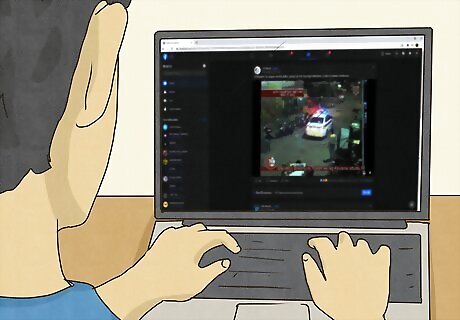
Stay informed. Use the local news, radio, and social media to alert you as to where to stay away from. Just as the rioters have started using social media and texting to alert one another where to go, you can flip this on its head and ask people to help you know where to stay away from. Messages informing you of which streets and areas are currently being targeted provide you with instantaneous warnings of where to avoid. Social media may provide new information as rapidly as possible, though it may not be as accurate, so keep your bases covered. Remember that staying informed can help you avoid a riot even better than it can help you survive it. Staying on top of the news can help you know which areas should be avoided in advance.
Additional Precautions for High-Risk Areas
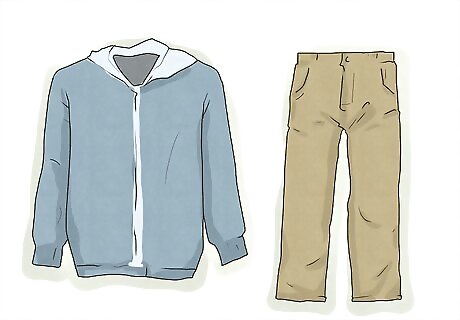
Wear clothes that minimize your amount of exposed skin. It's best to wear long pants and a long-sleeved shirt when you go out. Do not wear clothing that could be interpreted as military or police wear. Avoid wearing anything that looks like a uniform. In addition, do not make signs that can be also interpreted as a military gesture. Furthermore, if you do not want to be mistaken for a rioter by the police, avoid dark-colored clothing, especially black hooded sweaters, since this type of clothing is associated with rioters in many countries around the world. Every crowd of rioters is unique. Though you can't do a costume change in the middle of a riot, you should try to avoid looking like the rioters if you can. For example, if you're caught in a riot and are wearing the same sweatshirt as the rioters, take it off.
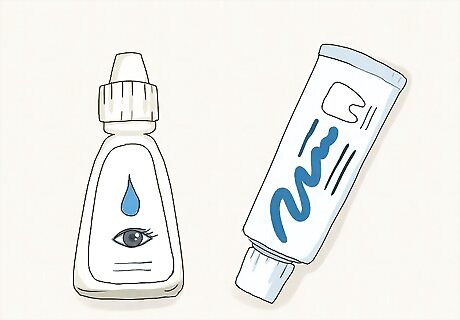
Carry a solution for rinsing your eyes in case you're exposed to tear gas. If you're worried that you may be exposed to tear gas, you should have a solution of half liquid antacid and half water. You can find these products at many drug stores and grocery store and a spray solution is generally best. If necessary, use it to rinse your eyes if you are exposed to tear gas. You can also carry toothpaste with you and smear it under your eyes if tear gas is released and you have nothing else available to protect you.
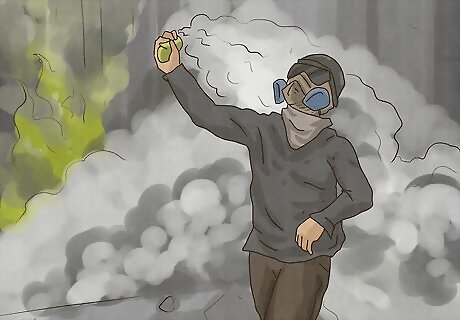
Do your best to avoid being hit by riot control chemicals or weapons. Police may deploy riot control agents (tear gas, water cannons, or rubber bullets, for example) to disperse a crowd. These weapons and chemicals can cause severe pain, respiratory distress, and blindness. Try to stay away from the front lines of a riot, and learn to recognize the signs that a riot control agent has been used and how to handle exposure. Avoid wearing oil-based moisturizer or sunscreen as chemicals cling to these on your skin. Remove them with detergent-free soap before going near the riot. Wear glasses rather than contact lenses; tear gas behind contact lenses can cause intense pain. Swimming goggles can protect your eyes, as can a gas mask. Put wet bandannas in a plastic bag and carry these for your mouth. Wrap them around your mouth if tear gas is released. They need constant replacement as they will keep soaking up the gas. Wear vinyl or latex gloves to protect your hands from pepper spray. Carry spare clothes to change if you're hit by chemicals or a water cannon. Put them in a plastic bag for protection. Avoid rubbing your hands or fingers into eyes, nose, mouth, etc. after a chemical attack. Stay calm.
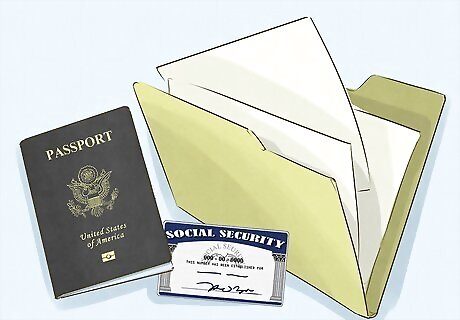
Keep your documents on your person if you're traveling abroad. If you're traveling abroad, register with your country's consulate and carry your passport and/or visa with you at all times. Even domestically, have ID and emergency contact information on you in case you are arrested or become unconscious.
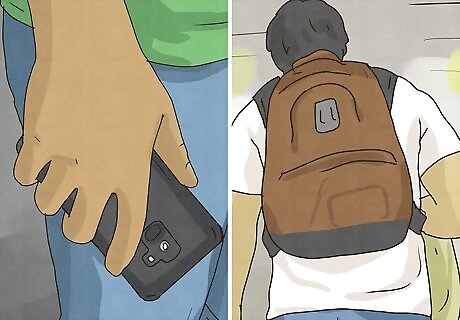
Carry an extra cell phone. If you're walking around a high-risk area, keep your phone on you. If possible, carry two—one in your pocket and one in a bag. That way, if one is lost or taken, you still have another one.

Have sugar candy on hand to keep up your energy. Adrenaline will drain you of energy quickly and a sugar hit will help you move out faster.

















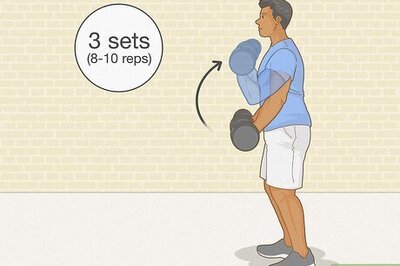

Comments
0 comment